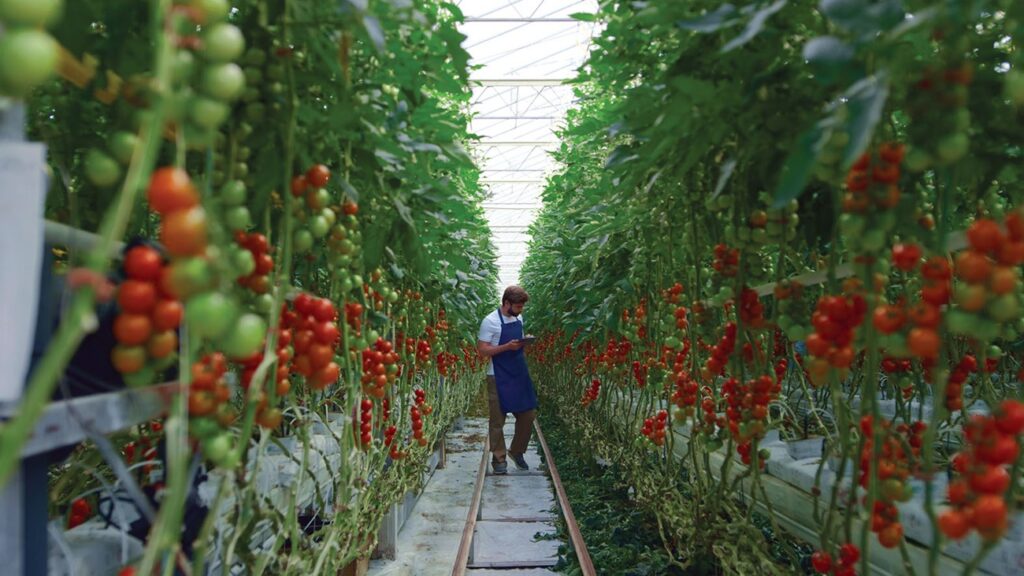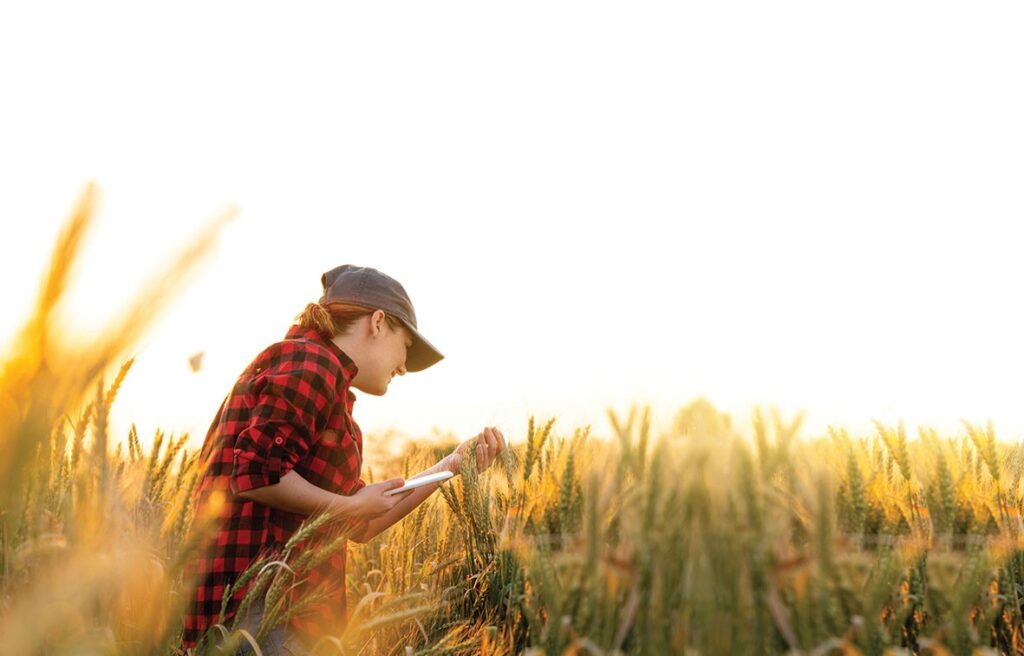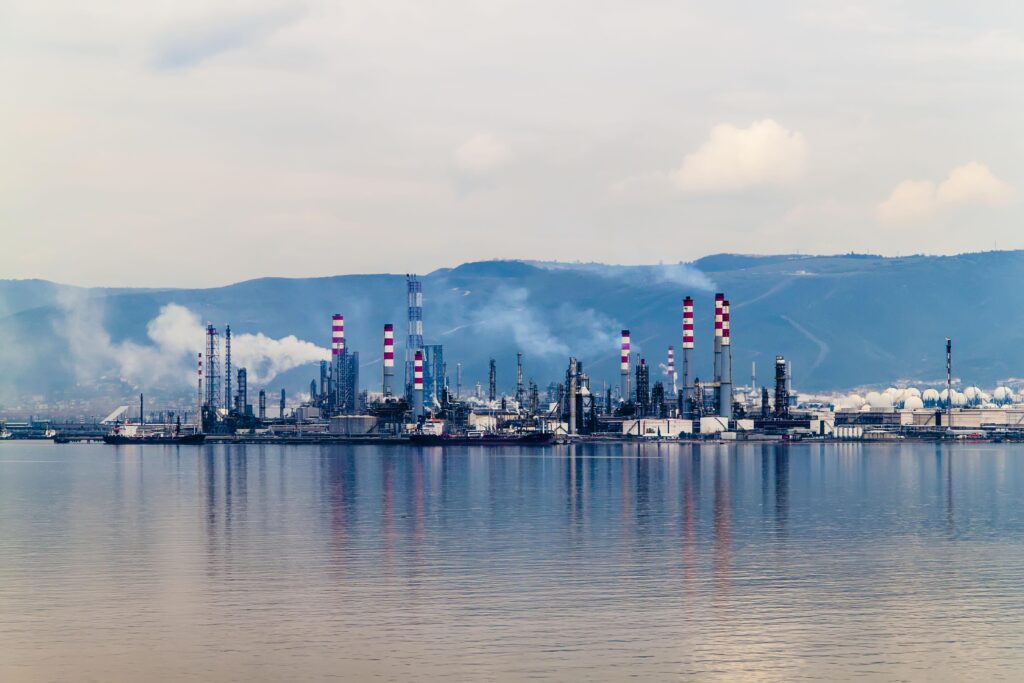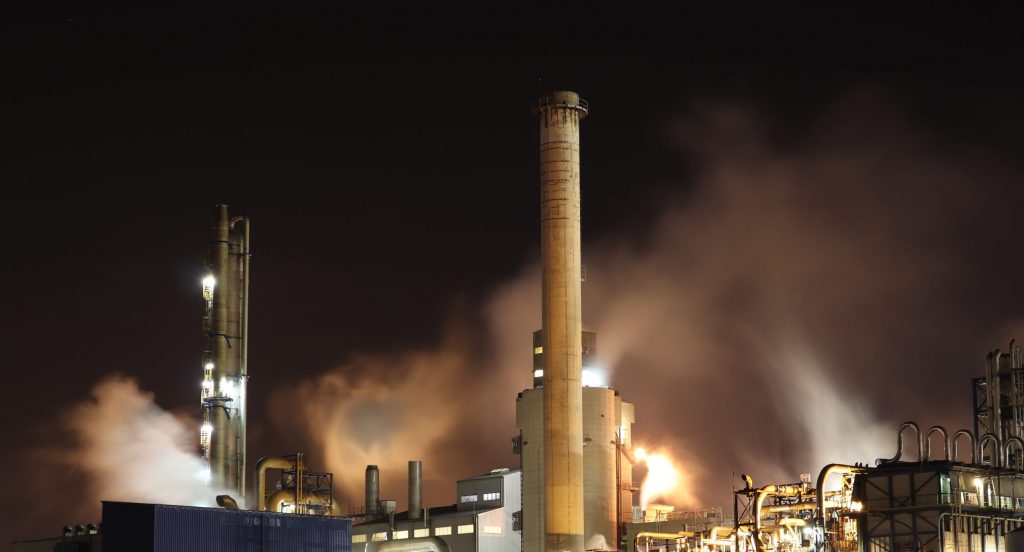Rising food prices amid food security warnings have “triggered a global crisis that will drive millions more into extreme poverty, magnifying hunger and malnutrition while threatening to erase hard-won gains in development,” said a World Bank update in July.
As of July, the Agriculture Price Index was 19% higher than it was in January 2021, noted a World Bank paper. “Information from between March and June 2022 shows high inflation in almost all low- and middle-income countries,” said the paper, adding that “93.8% of low-income countries, 89.1% of lower-middle-income countries and 89% of upper-middle-income countries have seen inflation levels above 5%.”
To dampen the effects of rising prices, Egypt and many other low- and middle-income countries have announced plans to increase cultivated lands and agriculture output. During a May briefing, President Abdel Fattah el-Sisi inaugurated the “Egypt’s Future Project,” a 1.5 million-acre agriculture initiative along the Cairo-Dabaa highway. He stressed it should be completed by the end of next year. It follows the New Delta Project, a project announced in March 2021 involving 1 million feddans in the Delta region to be completed in two years.

Those projects will use the latest sustainability technologies to prevent a drop in crop yields due to climate change. “Egypt’s agriculture sector weathered the recent COVID-19 pandemic and economic slowdown relatively well, [outperforming the] services and industry sectors,” noted a report from the International Food Policy Research Institute (IFPRI), titled: Climate-Reslience and Investments For Egypt’s Agriculture Sector published in September 2021. “But agriculture is unlikely to do as well under climate change.”
The transition to sustainable agriculture could prove tricky. It’s not just about making crops more resilient to climate change, but also about cutting greenhouse gasses causing climate change in the first place. If the transition is not managed and supported correctly, it could threaten farmers’ livelihoods and national food security. Mass protests by farmers erupted in the EU over plans to shift to sustainable farming. Meanwhile, the bankruptcy of Sri Lanka three years after announcing its transition to eco-friendly agriculture showcased the potential risks of such a move.
Vital sector
According to a USAID paper published in April 2022, farming accounts for 11.3% of Egypt’s GDP and 28% of employment. It is essential to Upper Egypt’s economy, where 55% of residents work in agriculture.
Agriculture also is a primary source of foreign currency. In December, Assistant Minister of Agriculture of Land Reclamation Mohamed El-Qersh told Egypt Today that agricultural exports are “nearly one-fifth of Egypt’s exports and positively affect half the Egyptian population.”
The IFPRI report describes Egypt’s agriculture sector as “vibrant … chiefly due to large investments in irrigation systems along the Nile.” It added the country also has “one of the world’s largest agricultural research and development … systems and supports modern farm mechanization in commercial agriculture.”
During the past three decades, Egypt’s focus shifted from strategic crops and commodities to more export-oriented produce. As a result, the country is the world’s largest wheat importer. It also relies heavily on imported maize, corn, soybeans, feed and fodder.
On the other hand, Egypt is the world’s largest exporter of oranges. It also is a major exporter of other citrus fruits, potatoes, strawberries, tomatoes and onions. Overall, it exports 350 agriculture products to more than 150 countries, according to the Ministry of Agriculture data.
According to the World Data Atlas, Egypt is a net importer of agricultural produce with a “food trade” deficit of 19.8%. The U.S. Department of Agriculture says the country imports more than half of agricultural product needs.
Accordingly, the government has been working to increase agriculture self-sufficiency. The Ministry of Planning and Economic Development (MPED) allocated EGP 73.9 billion ($3.9 billion) to the agriculture sector for fiscal year 2021/2022 compared to EGP 43 billion a year earlier. That has allowed the “agricultural GDP” growth rate to reach 11% in FY 2021/2022, noted MPED.
El-Qersh said one “axis” of the ministry’s strategy is increasing cultivated areas, including reclaiming 4 million arable feddans to add to the current 9 million. The second aims to increase self-sufficiency by “maximizing the use of the land and water … to increase productivity,” El-Qersh told Daily News Egypt.

Climate impact
External factors may slow the ministry’s strategy, however. The IFPRI report said unpredictable weather patterns would hurt the yield per acre: “Climate change affects crop productivity globally; in Egypt, large adverse impacts are expected for the country’s agriculture and food systems.”
The report said rising temperatures will have a “direct impact” on agriculture output: “By 2050, mean daily maximum temperatures for agricultural areas are predicted to increase by 3.1 degrees Celsius and minimum temperatures by 3.4 degrees over recent levels.”
That will come with less rainfall, further increasing reliance on the Nile, underground water and desalination. “Annual rainfall is projected to decline by as much as 15 millimeters; this is substantial, given that annual rainfall levels average only 42 millimeters in the country’s agricultural areas,” noted the IFPRI report. “At the same time, potential evapotranspiration from crops, an indicator of irrigation water demand, is expected to increase by … 21%.”
That would result in an average decline of 10% in yield per acre, the “result of heat stress, water stress and increased salinity,” said the IFPRI report.
Invariably that would lead to higher food prices. That might be good for fruit and vegetable growers, but the report noted that most Egyptian farmers are net food buyers and “poorer farmers particularly will suffer.”
The document estimated the cost of growing maize could rise by 23% by 2050 and 19% for rice. “Prices of oil crops, root and tuber crops, and poultry are all projected to increase significantly,” noted IFPRI, “substantially affecting the food security of poor Egyptians.”
That will put the country in a critical position. “Higher prices … will reduce Egypt’s food import demand, as well as dampening demand for its exports of high-value commodities, such as fruits and vegetables,” the IFPRI report said. “These tighter food markets will make it more difficult for Egypt to rely on food imports to augment domestic supplies.”
Another factor that will hurt Egypt’s agriculture output in the long term is old cultivation methods that waste water. “Agriculture is the predominant user of freshwater resources in Egypt, with an estimated consumption level of 62 billion cubic meters annually,” noted the IFPRI report. That is nearly 82% of the total supply. “With an increasing population, growing investment in industry, and increasing water loss to evaporation, reduced availability will be a growing threat to the country’s agriculture economy.”
Expansion complications
Even if Egypt increases its arable lands faster than the rate of decline in food yields per acre and secures enough water to support that expansion, the fact remains that agriculture hurts the environment. That ultimately causes more climate instability, reduces yields, exacerbates food insecurity and boosts prices.
A blog post in October on EIT Food, an EU-supported food innovation platform, noted, “Agriculture, forestry and other types of land use are currently responsible for almost a quarter of global greenhouse gas emissions.” That mainly comes from replacing forests with farmland, emissions from livestock waste, and the use of chemical fertilizers.
EIT Food’s blog said converting forests to farmland, overfarming, overcultivation, and overgrazing degrade the soil. That damages the soil’s ecosystem and makes arable land less able to keep carbon dioxide away from the atmosphere, hold natural nutrients and prevent erosion.
Farming techniques and technologies are “the primary driver of biodiversity loss,” added the blog. According to a U.N. Environmental Program press release in February 2021, agriculture is the main threat to 86% of species at risk of extinction. The World Bank estimated farming practices account for 70% of all freshwater use globally as of May 2020.

Green farming
An important way to navigate those grim prospects is to shift from conventional techniques and technologies to sustainable, eco-friendly cultivation methods. The Food and Agriculture Organization of the United Nations (FAO) says that for agriculture to be sustainable, it “must meet the needs of present and future generations while ensuring profitability, environmental health, and social and economic equity.”
To make that transition, the IFPRI report, which focuses on Egypt, says investment in agriculture R&D will be critical. The key to mitigating the impact of climate change will be to create more resilient crops, said the report, noting that Egypt needs to develop new and improved seeds with traits focused on adapting to climate change. It also requires “soil fertility management practices, improved irrigation management, and enhanced crop protection from pests and diseases.”
“These technologies [work] best when applied in tandem,” said the IFPRI report. However, it noted that “investments in climate-resilient seed technologies provide the largest returns, followed by investments in soil fertility, crop protection, and irrigation.”
That could be a fresh opportunity to attract FDI to Egypt. “Sustainable agriculture innovation is diverse and is attracting large investments,” EIT Food said.
For example, the EIT Food report pointed out that employing robotic devices to monitor crops facilitates the use of “satellite data and AI” to minimize financial losses and waste, and preserve resources. “The goal is to help manage trade-offs and understand how decisions we make today are going to affect the future, especially in dynamic systems like agriculture,” said Ilay Englard, co-founder and CEO of Trellis, a tech company offering AI-based solutions to agriculture companies. He was speaking to Food Fight, a podcast, in March.
The European Commission also highlights the importance of regenerative practices and nature-based farming, defined as “Solutions … inspired and supported by nature, which are cost-effective and simultaneously provide environmental, social and economic benefits and help build resilience.”
These include minimizing soil disturbance and exposure to chemicals while maximizing biodiversity above and below the soil by using natural fertilizers. EIT Food recommends keeping fertile ground “covered with crops as long as possible [and] adapting to the local environment.”
The third way to ensure sustainable farming is ” training and education,” noted the EIT Food report. That includes everyone affected by agriculture, from farmers to consumers.
Training should encourage “farmers to test new technologies,” explained the EIT Food report. The most effective way is to protect farmers from potential losses if their tests fail to yield the expected results. “Validating new products and services for agriculture in real conditions can sometimes be challenging. Farmers might be hesitant [because] of potential losses due to climate and market situations.”
One way to increase the likelihood of success is to link training initiatives with farmers who already use similar technologies. A case in point is EIT Food’s Regenerative Agriculture Revolution (RAR) program, which offers farmers in the south and east of Europe training in the latest technologies and methods. The program also puts willing farmers on a “three-year regenerative agriculture transition program, guided by EIT Food’s regenerative agronomists.”
RAR also connects farmers with startups via the Test Farms program. “Startups can validate the functionality or the market acceptance of their solution, and farmers can gain access to the newest innovations that can improve their … work and market agriculture that is more sustainable and efficient,” said the report.
Transparent and traceable systems are essential to encourage farmers to switch to sustainable farming. “Customers [want] to see firsthand what farmers are doing to transition to more sustainable practices,” said the EIT Food 2020 Trust Report. That applies more to large farms, which the report said must be more transparent than smaller farmers.
However, too much transparency and labeling could backfire. “People feel confused and not helped by the current proliferation of labels,” said the 2020 Trust Report. Labeling must be simple enough to “enable consumers to compare products and make informed choices based on the environmental impact each product has.”
The last factor is “cross-sector collaboration,” said the EIT Food blog. That would “ensure we are all able to transition to sustainable agriculture … accelerating [that] transition.” Conference of the Parties events and the U.N. Food Systems Summit are ideal global platforms to align the international transition, said the blog.
Social barriers
The radical transformation from conventional to more sustainable farming methods faces several challenges. The U.S. loses “hundreds of millions of tons of agricultural soil to erosion annually, a rate [estimated] to be 100 times that of natural soil replenishment,” said the US Department of Agriculture (USDA). Yet few are taking up sustainable farming.
Stefan Gailans of Practical Farmers of Iowa, an organization that helps farmers shift to sustainable agriculture, said that while “some farmers can’t farm sustainably, others chose not to. Cultural norms keep some U.S. farmers from changing their ways.” As a result, those who make the transition don’t advertise or promote it.
Other farmers, particularly small ones, may find that transition too complicated and costly with little guidance on how to make the switch. There are no one-size-fits-all solutions. “How we apply regenerative agriculture in one region will be different than how we apply it in another,” Jennifer O’Connor, author of an October 2020 report on barriers to regenerative agriculture in the U.S., told Science Line, a specialized portal, in April 2021.
The reason customized solutions are essential at this stage is that sustainable agriculture is a relatively new field. “We still need to tune these techniques,” Claire Kremen, a conservation biologist and agroecologist at the University of British Columbia in Canada, told Science Line in April 2021. “We need to make sure that whatever suite of techniques is used by a farmer works for that particular cropping system in that particular region.”
Forcing sustainability
The other way to ensure farmers switch to sustainable farming is through regulations. The Netherlands government in July announced plans and laws to halve nitrogen oxide emissions from farming nationwide and slash it by 75% in protected nature reserves by 2030.
Holland’s ultimate target is to reduce emissions by 70% to 95% by 2050, reported Euronews. “We have to emit so much less nitrogen and, unfortunately, the agricultural sector emits a lot,” Christianne van der Wal, minister for Nature and Nitrogen Policy, told the media when unveiling those targets. “They have done an awful lot to emit less, but that is not enough. It still needs to be reduced a lot more.”
The government focus is lower manure from Holland’s thriving livestock, which “produces an unusual excess of animal feces,” reported Time magazine in July.
The expedited 2030 time frame reflects the government’s urgency in dealing with the nation’s future. “It’s necessary to improve … nature, for our health, for clean air, water, soil and agriculture,” Rudi Buis of the Dutch Ministry of Agriculture, told the BBC in July. “If we want some economic activity in the future, we also have to improve our nature.”
However, that could be a significant burden for Dutch farmers. According to government estimates, 11,200 farms (nearly 30% of the total) couldn’t comply with those targets and, therefore, must shut down. Meanwhile, 17,600 farmers would have to significantly reduce their operations to remain within the state’s new thresholds.
“The simple reason why it’s so difficult to step back from chemical fertilizers, pesticides and other agrochemicals is they enable stable and quick mass production of food,” reported Chad de Guzman, an editorial fellow at Time magazine, in a July article. The problem is magnified by the drop in food supply worldwide. “With some 193 million people [facing] acute food insecurity, according to the World Food Programme, fast and easy access to food grain cannot be overemphasized,” he added.
By the end of June, protesters in the city of Apeldoorn attempted to free jailed farmer activists, forcing the mayor to declare a state of emergency. Nearly a week later, police used tear gas to break up a protest that blocked roads to prevent trucks from reaching supermarkets. On one highway, the traffic jam was nearly 2 kilometers (1.2 miles) long, reported NOS, a local news portal.
Farmers in Germany and Poland also voiced displeasure with their governments’ plans to switch to sustainable agriculture, complaining about the high cost of the eco-friendly farming methods..
Fast transition
A rapid shift to sustainable farming could have dire fiscal and monetary repercussions in low and middle-income countries. In 2019, Sri Lanka President Gotabaya Rajapaksa “issued a blanket order to ban all imports of agrochemicals” to meet his earlier promise to transition quickly.
That left nearly 2 million Sri Lankan farmers (27% according to government data) scrambling, reported de Guzman. Meanwhile, the government failed to import enough natural fertilizer and didn’t subsidize farmers to cover the extra cost. The dire results were most evident in rice yields, which dropped 30%, according to government data. That was enough for the country to become a rice importer for the first time. Tea yields fell 18%, “crimping” export revenues, reported de Guzman.
Those grim statistics are mainly due to the inability of existing sustainable agriculture methods and technologies to be scaled up like conventional farming approaches.
In response to protests, the president eased import restrictions on agrochemicals in November but did not restore subsidies. Prime Minister Ranil Wickremesinghe announced in July his country was “bankrupt” after initial negotiations with the IMF failed. “We are now participating in the negotiations as a bankrupt country,” he told parliament.
There were several reasons for Sri Lanka’s dire situation. One was the significant drop in tourism revenue due to COVID-19 lockdowns. The other was Rajapaksa cutting taxes to stimulate the economy, which led to less revenue. Yet, de Guzman said the national transition to sustainable agriculture in 2019 instigated Sri Lanka’s bankruptcy. “The economic turmoil that has brought the … nation to this point was precipitated by its disastrous shift to organic farming,” he wrote. That poses “new questions about the viability of sustainable agriculture.”
Rock, hard place
Governments, including Egypt’s, face tough choices, little guidance or experience regarding best practices, and mounting pressure to switch to sustainable farming. “Industrial agriculture is widely understood to be unsustainable and a source of environmental degradation,” said de Guzman. The FAO says pesticide use per unit of soil increased 75% between 1990 and 2016.
Accordingly, Egypt must have solid political support when implementing the switch to sustainable agriculture in the short term. Otherwise, the country could face pushback similar to Holland’s when the transformation to sustainable farming becomes inescapable. “For years, the [Dutch] government has failed to act on scientific data,” Natasja Oerlemans, head of food and agriculture at WWF Netherlands, told the BBC in July. That has “meant drastic measures are now needed to tackle the issue.”
For Caroline van der Plas, leader of the Dutch Farmer-Citizen Movement, finding the right balance in the short term will likely be political, not economic or legislative. “The government has to start talking to the farmers, not just talking but listening and really hearing them, or things will get worse,” she told the BBC in July.
The failure to protect livelihoods while moving toward sustainable agriculture could lead farmers to abandon their land when it becomes too difficult to grow crops. “When the farmers are gone, they are not going to come back,” said van der Plas during Dutch parliamentary debates. Long term, that could cause the Egyptian government’s plans to reduce dependency on imported food to fail.







